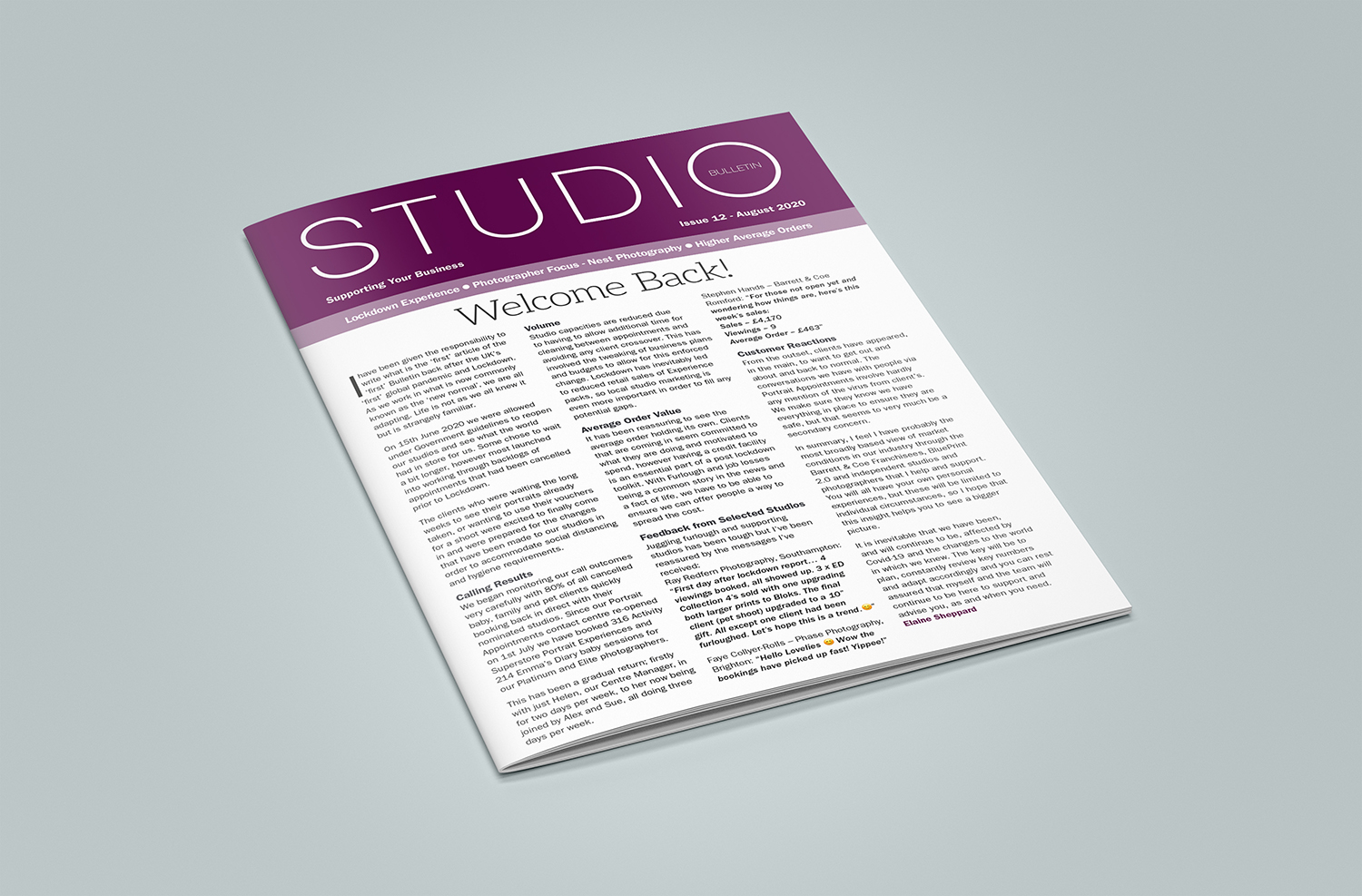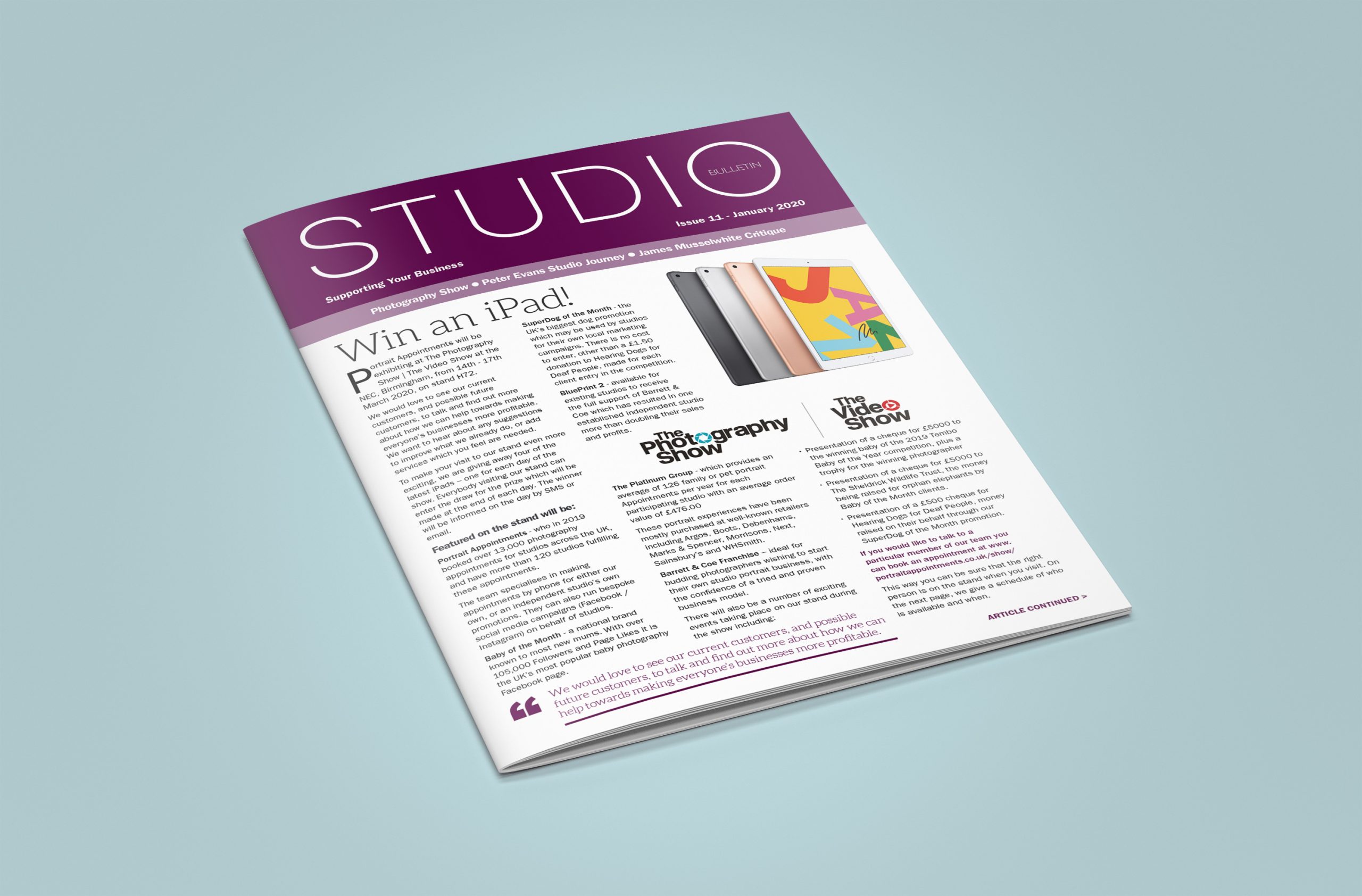The Studio Bulletin is BACK! Here is the latest Studio Bulletin featuring Elaine Sheppard’s visit…
There are various techniques you can use to create different lighting effects but, as often with photography, simply knowing these techniques will not mean that you always capture a great image.
For portrait photographers knowing the emotions certain lighting can reflect or how the angle of the light will impact a subject’s face is vital. This is why it is so important for portrait photographers to get to know their subject before the shoot and understand what their client wants to get from the photograph. As well as this, it is essential for a photographer to be able to read faces quickly, as this means that they will immediately know what lighting technique will best suit the subject.
Creating drama shots
Dramatic shots are perfect when wanting to create impact images. Whether you are photographing a band for their promotional material or an individual wanting a more unique portrait shot; dramatic shots often create a moody, intense and intimate image. Dramatic shots are usually created using low lighting, however you need to be aware of how shadows fall on your subject’s face with this technique. Many photographers choose to use split lighting for these shots, however keep in mind that this can create a masculine pattern and might not be ideal when photographing women.
Creating happy shots
When photographing couples and families often they will want to project energy, happiness and optimism. These shots are easier to create in studios where you have more control over the lighting you use. While these shots use a lot of direct light, which means using flash and a white reflector, they also create shadows on your subject face. Be aware of how these shadows fall and what impact they can have on the overall image, as well as how they will impact your subject. For example if your light source is just above eye level you will most likely create loop lighting, which means that the shadows will fall under the subject’s nose and on their cheek, while this often creates a flattering image be careful that the light source is not too high or else you will create too many shadows.
Using natural light in photography
A good use of lighting can highlight certain colours and subdued others. For happy shots, bright colours are ideal, while for dramatic shots neutral colours usually work better. Again this is easier to do in a studio but, while it can be harder with natural light, the results can be more rewarding. Timing is essential when using natural light. Sunrise and sunset create a softer light, so that colours seem warmer and less intense. Alternatively, midday sunshine, particularly in summer, creates very intense lighting leading to bright colours but lots of contrast and sharp shadows. If photographing a wedding, for example, it would be ideal to get shots of the bride early in the morning when the lighting is softer or shots of the couple later in the afternoon when the light is starting to be less harsh and intense as this will create more flattering shots.
Although getting the lighting right can be difficult, especially for those new to photography, once you’ve mastered the techniques, along with understanding the emotions and impact light can have, it will help you to produce more though-provoking and sophisticated images.
If you’re interested in taking your portrait photography to the next level attending one of our portrait photography courses will help you gain the knowledge and skills you need to create better shots.

